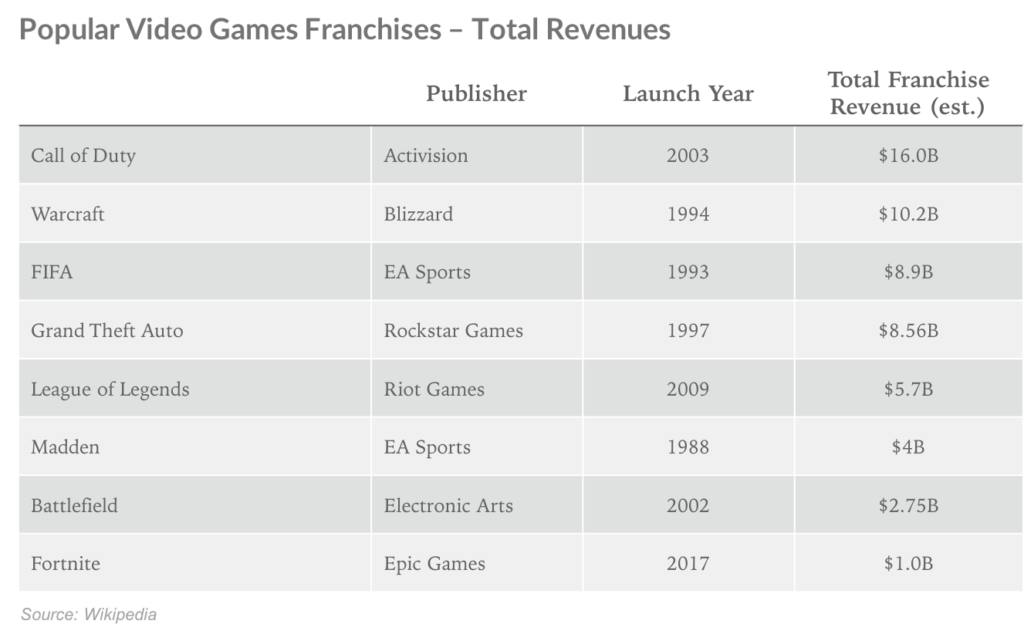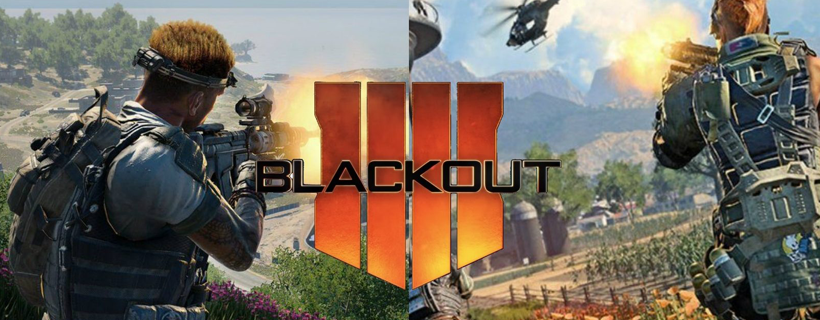- Fortnite surpassed the $1B mark for total revenue in July by employing a unique monetization model compared to typical franchise games. Instead of selling its game for an upfront fee, Epic Games, the publisher of Fortnite, gives the game away and bets on its ability to monetize content in other ways.
- While major publishers are not likely going to give their IP away, they can learn a lot from the success that Epic has had monetizing Fortnite.
- Last week, Activision released the beta for Blackout, the upcoming battle royale game mode that will be included in the next installment of the Call of Duty franchise.
Fortnite still has a long way to go in order to catch up to other major game franchises. The way in which Fortnite became a success is far different. Most major franchises require initial purchases of the game. While Fortnite’s single-player PvE does have an upfront cost, its massively popular Battle Royale mode is free-to-play. By offering the game mode for free, Fortnite has been able to amass a giant following in a short period of time because there’s minimal friction to download the game and start playing with your friends without an upfront purchase. Despite Fortnite’s success, major publishers aren’t likely to start giving their IP away for free. They can, however, follow the way Epic has built in-app purchases into the game to better monetize their upcoming titles.
Taking a look at some of the most popular video game franchises, many require upfront purchases of the content, including Call of Duty, FIFA, GTA, Madden, and Battlefield. Others, like Warcraft, offer their game for a monthly subscription fee.

Fortnite has taken a different path. Outside of the purchase of its single-player game mode, there are two ways in which Fortnite earns in-app revenue:
- Battle Pass. Fortnite’s online multiplayer mode is broken up into seasons, which fluctuate in duration but tend to last about 75 days. Each season starts a player at Rank 0 and Tier 0. Throughout the season, players try to improve both their rank and tier. In-game items are unlocked at certain tier levels, but the majority of those in-game items can only be unlocked if a player purchases a Battle Pass for 950 V-Bucks. For context, 1,000 V-Bucks = $9.99 USD. At any point throughout the season, players can purchase a Battle Pass and retroactively own any items they have earned.
- Item Shop. Fortnite’s item shop gives users the ability to purchase skins, emotes, pickaxes, gliders, and back bling not offered in the Battle Pass. Items range in price from 200-2000 V-Bucks and are changed daily. You can find out what items are offered today here.
While major publishers might consider offering a season pass for their games, it’s unlikely that they will sell the pass given the requirement for users to purchase the games up-front already. Instead, Activision and EA will likely rely on item shops to monetize the game mode. Across both the season pass and item shop, Fortnite has done a few things exceptionally well that Activision and EA can learn from.
- Refreshing Content. While a subscription model isn’t new to video games, Fortnite has made each season fresh and interesting, adding new game elements and modifying the map throughout the season. They’ve also experimented with limited-time game modes to give players a new way to play the game. These changes have helped keep existing players engaged while giving them something new to share with their friends who aren’t playing the game yet. When it comes to the item shop, Fortnite offers a small number of items that change each day but are often new items that are being introduced to players for the first time.
- Artificial Scarcity. Offering fresh new items is great, but the scarcity that Fortnite adds is key to getting users to purchase items they are interested in. If a player sees a skin they like, an emote that Ninja uses, or a glider to match a skin they own, they need to purchase the item before it gets removed from the store or there is a good chance they won’t have an opportunity to purchase it again. Unlike other skins marketplaces, item availability is short-lived, and FOMO exists within the game. This is also part of the Battle Pass, as the best items typically come at the highest tier. As seasons come to an end, players are going to do everything they can to reach tier 100 and unlock all items for the current season.
Scarcity impacts both the willingness of players to spend money in the game and the amount they play the game.
- Authenticity. Fortnite offers authentic content unique to the world and story Epic has created. Activision and EA including battle royale in their IP is expected, but their games should keep authentic styles and elements that made their franchises a success and refrain from trying to replicate too many details of Fortnite. We don’t expect the new games to include build battles, one of the most unique parts of Fortnite, and we don’t think they should. Build battles should remain in Fortnite, it’s what makes the game authentic.
Fortnite has a long way to go before catching up to the lifetime revenues of other top franchises, but we think its popularity and authenticity give it a good chance to stay in the company of the top earners and maybe even move up a few spots. Advice to Activision and Electronic Arts as they vie for a Victory Royale: keep your content fresh and authentic, and offer unique items that users are incentivized to buy.
Disclaimer: We actively write about the themes in which we invest or may invest: virtual reality, augmented reality, artificial intelligence, and robotics. From time to time, we may write about companies that are in our portfolio. As managers of the portfolio, we may earn carried interest, management fees or other compensation from such portfolio. Content on this site including opinions on specific themes in technology, market estimates, and estimates and commentary regarding publicly traded or private companies is not intended for use in making any investment decisions and provided solely for informational purposes. We hold no obligation to update any of our projections and the content on this site should not be relied upon. We express no warranties about any estimates or opinions we make.
